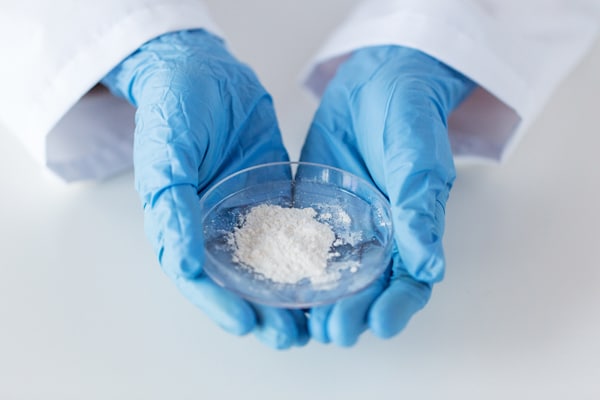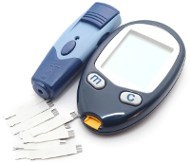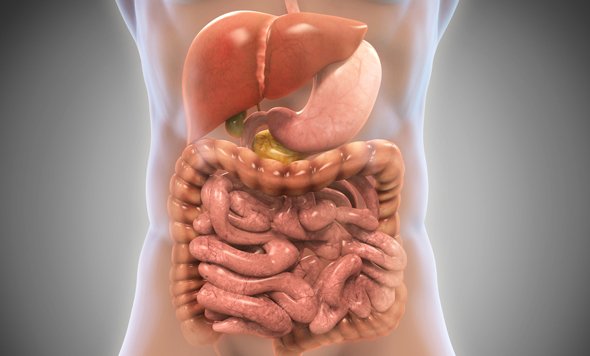If you often read food labels, chances are you have come across the ingredient maltodextrin many times.
It’s an incredibly common additive, and studies have found that approximately 60% of all packaged foods contain it (1).
Maltodextrin is made from starch and used for many reasons, mainly as a filler ingredient, a thickener or a preservative to extend shelf life.
Yet despite being labeled as safe by the FDA, maltodextrin is highly controversial. This article examines if it’s bad for your health and whether you should avoid it.
What Is Maltodextrin?

Maltodextrin is an artificial carb made from starch.
In the US, most maltodextrin is made from corn or potato starch, but some countries use rice or wheat starch. This often creates controversy, as 90% of corn in the US is genetically modified (2).
The starch goes through a process called partial hydrolysis, where water and enzymes are added to partly digest the starch. It’s then refined and dried to produce a fine white powder with a neutral or slightly sweet taste (3).
Maltodextrin is used as a food additive in many processed goods to create bulk, enhance texture and extend shelf life.
Some products that contain maltodextrin include:
- Candy
- Instant puddings
- Low-fat yogurt
- Sports drinks
- Infant products
- Salad dressings
- Sweeteners
- Soaps
- Cosmetics
- Laundry detergent
Another kind of maltodextrin is resistant maltodextrin. Unlike regular maltodextrin, resistant maltodextrin is a type of artificial soluble fiber.
This article will only focus on regular maltodextrin, the common food additive.
Summary: Maltodextrin is an artificial carbohydrate made by processing starch into a fine white powder. It’s commonly used as an additive.
Why Do Manufacturers Use It?
Maltodextrin is versatile and cheap, which makes it appealing for manufacturers.
Some uses for maltodextrin include:
- Filler: As an ingredient in foods, it adds bulk without affecting taste. For example, the sweetener Splenda uses maltodextrin to add bulk and dilute the sweetness of its artificial sweetener sucralose, which is 600 times sweeter than sugar.
- Thickening agent: In products like low-fat yogurt, instant pudding, sauces, salad dressing and jelly, maltodextrin retains the thickening properties of starch.
- Improving mouthfeel: Maltodextrin is added to certain beers to improve body and smoothness without compromising taste or adding extra ingredients like alcohol or yeast.
- Binding agent: It is commonly used in pharmaceuticals to form tablets and pills.
- Preservative: Maltodextrin is used to extend shelf life, particularly in many infant formulas. It also dissolves easily without forming lumps, making it an ideal source of carbs.
- Creating a smooth texture: It can be found in many lotions and creams.
Summary: Maltodextrin is versatile. It’s most common uses are as a thickener, filler ingredient and preservative.
It May Have Benefits for Athletes

Many athletes seek ways to improve performance.
Supplements like sports drinks and energy gels are popular choices to help athletes train longer and recover from training sessions.
Maltodextrin is a common carb source in these supplements because it’s easily digested and absorbed by the body.
During exercise, the body breaks down its reserves of stored energy called glycogen into a usable form called glucose, also known as sugar.
Endurance athletes can deplete their stores of glycogen during intense training or competitions, so carb supplements replenish these stores and help the athlete train for longer (4).
Research suggests that taking a carb supplement like maltodextrin during or after exercise could improve exercise performance and recovery for endurance athletes (5, 6, 7, 8, 9).
For example, a study of eight healthy male cyclists compared the effects of taking a placebo versus a maltodextrin supplement on cycling performance.
They found that cyclists improved their average time to complete all laps by 26 seconds when taking the maltodextrin supplement, compared to the placebo (9).
Maltodextrin may also benefit resistance training athletes, as several studies show that consuming carbs like maltodextrin after training can help replenish the glycogen stores depleted during exercise (10, 11, 12).
Summary: Maltodextrin is a great source of easily absorbed carbs and can help improve performance and recovery in both endurance and resistance training.
It Has No Nutritional Value
Although maltodextrin has a use in sports, it’s a poor source of nutrients.
One teaspoon of maltodextrin is similar to sugar and contains 12 calories, 3.8 grams of carbs and almost no vitamins or minerals.
Starches are generally low in nutrients, but the processing required to make maltodextrin reduces its nutritional content even further.
Athletes may find its effect on performance and recovery outweighs its poor nutrient content, but for the average person, it provides no benefit.
It may also lead to excess weight gain if consumed without enough exercise, as it can easily add empty calories.
Most foods that contain maltodextrin are highly processed, provide little nutrients and are linked with higher disease risk (13).
Summary: Maltodextrin has virtually no nutrients besides carbs and is a source of empty calories.
It Has a High Glycemic Index

The glycemic index (GI) is a measure of how quickly foods raise blood sugar levels.
Low-GI foods have a GI value under 55, while medium-GI foods are between 51–69 and high-GI foods are over 70.
High-GI foods raise blood sugar quickly because they contain sugars that are easily absorbed by the gut.
Maltodextrin has an exceptionally high GI that ranges from 85 to 135, as it is highly processed and easily digested.
Athletes can tolerate high-GI foods like maltodextrin around exercise times since exercise makes the body more efficient at using and removing excess sugar for storage (14).
However, the average person can struggle to process the spikes in sugar from high-GI foods, which can have negative effects on overall health.
Eating high-GI foods frequently is linked with a higher risk of obesity and many other diseases, including type 2 diabetes and heart disease (15, 16, 17).
The large spike in blood sugar from eating high-GI foods could also cause a rapid drop in energy later known as a “sugar crash,” leading to hunger and cravings (18).
Summary: Maltodextrin has an incredibly high GI that ranges from 85 to 135. High-GI foods are linked with obesity and many other diseases.
It May Harm Gut Health

Did you know there are over 100 trillion helpful bacteria living in your lower gut? Known as your gut microbiota, they are incredibly important to your health.
The many different types of bacteria within the body play a role in processes like immunity, weight management, blood sugar and food metabolism (19, 20, 21, 22).
Your diet has a huge influence on your gut microbiota, as some foods encourage the growth of good bacteria while others hinder their growth (23, 24, 25).
Several studies on animals and humans with digestive diseases have found that a diet rich in maltodextrin may change the composition of the gut bacteria, making the body more susceptible to infections and disease (1, 26, 27, 28).
In one study, researchers found that exposing human intestinal cells to maltodextrin helped harmful bacteria like E.coli grow and develop features that damage the gut environment (28).
Another study found that exposing the intestinal cells of mice to maltodextrin decreased their antibacterial response, making them an easier target for Salmonella invasion (29).
Although several studies have discovered a link between maltodextrin and a higher risk of bacterial infection, more human-based studies in healthy individuals are needed to better understand how significant this link really is.
Summary: A high intake of maltodextrin may encourage the growth of harmful bacteria in the lower gut, increasing the risk of bacterial infection.
Some People May Experience Side Effects

Although there are no published studies linking maltodextrin to serious negative health effects, some people report side effects.
These include:
- Upset stomach
- Bloating
- Diarrhea
- Vomiting
- Hives or rashes
- Asthma
Most reported side effects are similar to carb intolerance or malabsorption, so if you have either of these, then it’s best to avoid maltodextrin.
For most people, maltodextrin is considered safe and is FDA approved.
Maltodextrin is generally considered gluten-free in foods regulated by the FDA if the label does not include wheat.
If you experience any allergic reactions or side effects after eating foods containing maltodextrin or taking supplements, you should stop immediately.
Summary: Maltodextrin is generally safe to eat, but if you suffer from a carb intolerance or malabsorption, it’s best to avoid it.
The Bottom Line
Maltodextrin from foods likely won’t have any negative effects. It’s widely used, and there have been no published studies linking it with serious side effects.
As a supplement, it only seems beneficial for athletes around exercise. It provides the average person no benefits and is low in nutrients.
People who should avoid maltodextrin are those at risk of or who currently have type 2 diabetes or insulin resistance, as it can dramatically spike blood sugar.
Finally, keep in mind that maltodextrin is found in processed foods, and following a healthy diet rich in whole foods will naturally minimize your maltodextrin intake.






